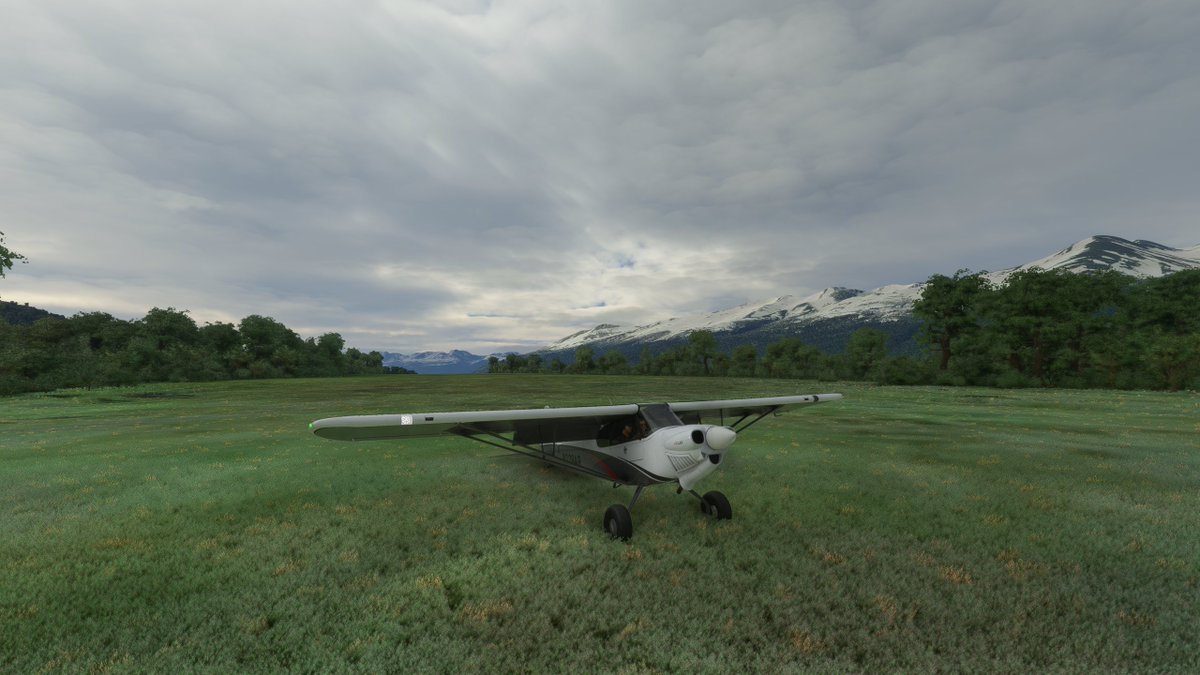
A little something different today, in MSFS. Today I'm flying the Yak-18T from Vnokovo Airport over Moscow. 

The Yak-18T is not to be confused with the Yak-18, a Soviet military trainer with an almost identical name. The Yak-18T is a different plane, introduced in the 1960s to train Aeroflot pilots. 

Although the Yak-18T is not that much larger than a Cessna 172, it is heavier and requires a more powerful radial engine (360-400 horsepower, vs 180 for the Cessna). 

Here's the lovely inside. One of the things I've come to appreciate about modern civil aviation planes is the standardized cockpit layout that has developed. You know where to find everything. The Yak-18T, like a WW2 fighter, just has instruments laid out every which way. 

It's not exactly obvious where to look, even when (some) things are helpfully labeled in English. I'm assuming that the altimeter works in meters, and the airspeed indicator in km/h, but I'm just guessing here. 

I've got a throttle and a propeller pitch knob, but I don't see any fuel mixture knob. Okay. I'm not going to be flying high enough to need one anyway. (The knob to open and close the engine cowling helps with airflow to cool the engine when you're taking off or taxiing). 

Enough, let's get out of here. First thing I notice is, you have to be very careful while taxiing. It lets you turn very sharply, but if you're going too fast you'll tip over. 

Moscow has a ton of airports, and Vnukovo is one of the closest and busiest of them. It was originally built at the outset of World War II using gulag labor. 

I'm using real weather, so maybe some of you Russian Twitter trolls can tell me if it's reasonably accurate today or not. 

I'm approaching Moscow from the southwest, overflying Moscow State University, famously known (along with several similar towers dotting the city) as Stalin's Wedding Cake. 

Just past it is Luzhniki Stadium, home to the Torpedo Moscow and Spartak Moscow soccer teams. To the right is the green expanse of Gorky Park along the river. 

Approaching the Kremlin straight ahead, with the golden-domed Cathedral of Christ the Savior to the bottom left below. 

The Kremlin below, with Red Square to its right. No, I'm not going to try to land there like that kid with his Cessna. 

Another view of the Kremlin and Red Square. Lenin's Tomb is the little red ziggurat between the two Russian flags. The large building across from it is the GUM department store. 

Flying to the north side of Moscow now, with its landmark Ostankino Television Tower (to the left side of my view). 

The Yak-18T is no longer produced, but apparently it is popular with some private pilots both inside and outside Russia because its sturdy construction allows it to sustain high G-forces, which makes it suitable for aerobatics. 

Flying past "Moscow City", the modern business district of Moscow, built to the west of the city's historic center after the collapse of the Soviet Union 

To be honest, I have no idea what the recommended approach speeds and flap settings are for landing. I do know you lower the landing gear below 200 km/h. After that, I just try to keep it aimed at the runway and well into the "white" portion of the airspeed indicator. 

I don't know if it's the sim or the plane itself, but I found the Yak-18T really super floaty over the runway, even with full flaps and power down to idle. I just kept sailing along about 10 feet over the runway waiting for it to settle. 

Well, hope you enjoyed this introduction to a plane I know I've never heard of before. I'd love to find a manual that actually tells me how to fly it! 

• • •
Missing some Tweet in this thread? You can try to
force a refresh


























